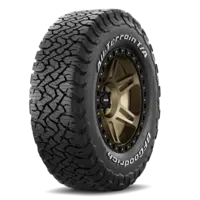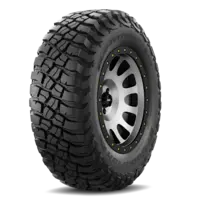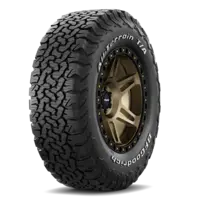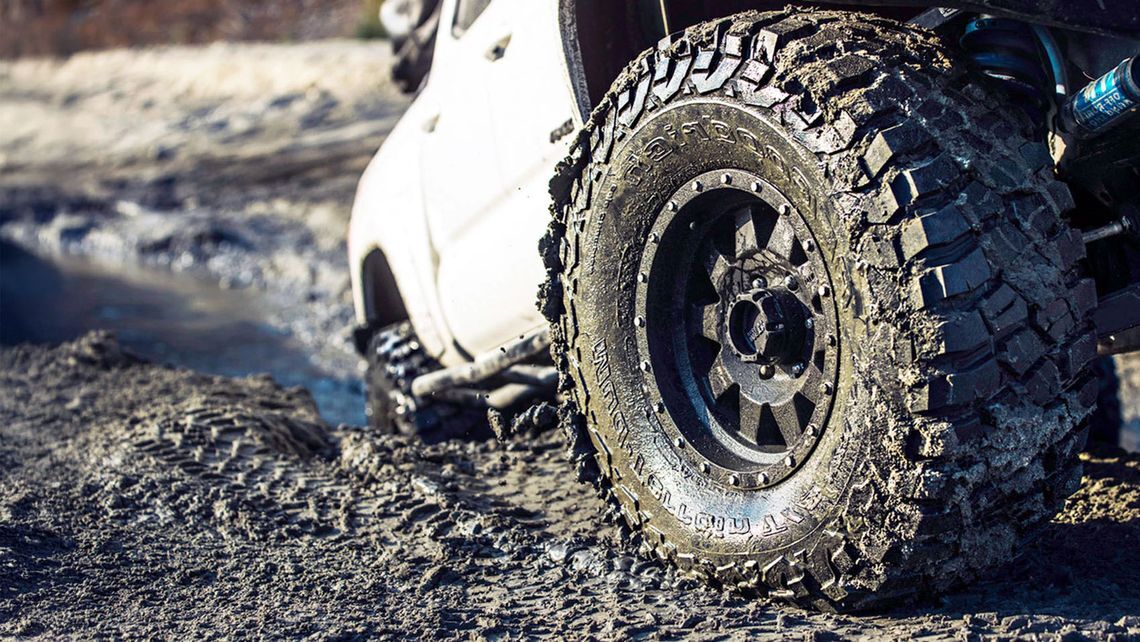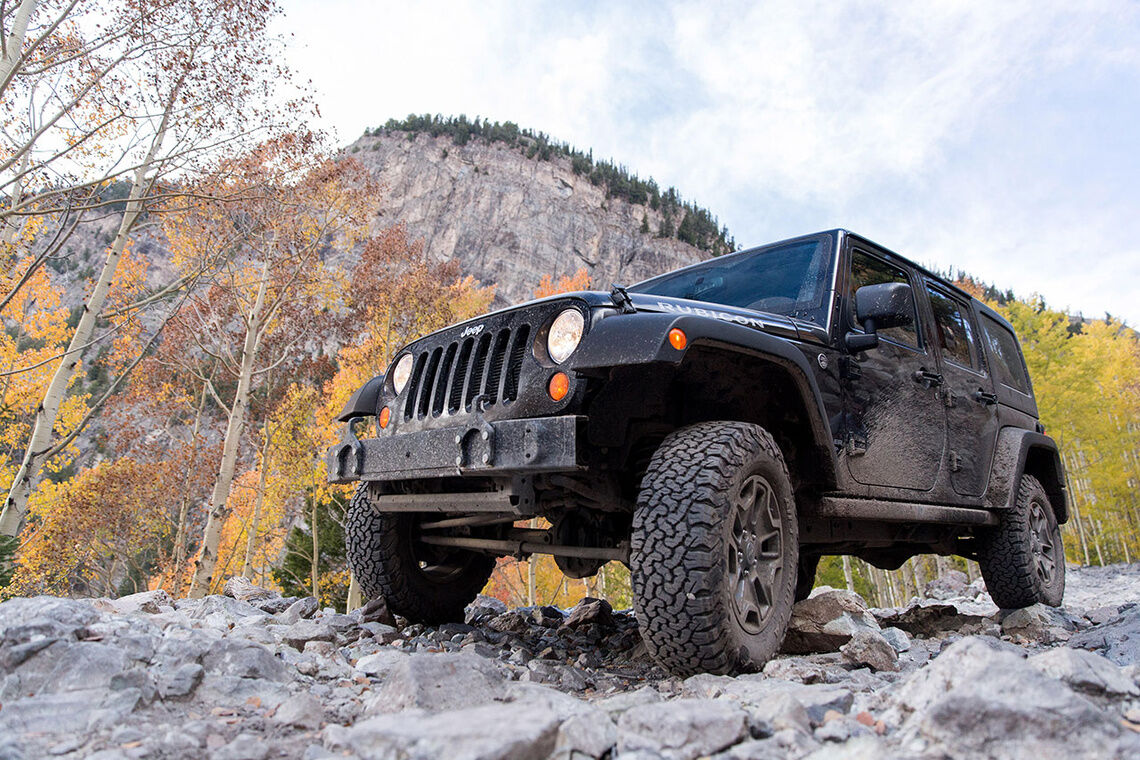Tackling muddy tracks and steep, gravelly hills demands more than just courage. It requires a solid understanding of your 4WD system. In this article, we’ll explain how these systems work and how to properly rotate your tyres for any off-roading excursion.
What are the benefits of a 4WD system?
For a vehicle to corner smoothly, its wheels need to turn at different speeds, which is managed by a component called a differential. Four-wheel drive vehicles also use a central differential to manage the speed differences between the front and rear axles.
In some situations, a standard 'open' differential can send power to a wheel that has lost grip and is simply spinning. To prevent this loss of traction, manufacturers use advanced four wheel drive systems like differential locks (diff-locks) and traction control, which ensure that power is directed to the wheels with the most grip for the greatest forward momentum.
By distributing power to all four wheels, 4WD systems improve traction and control, offering better grip so you can drive with confidence in difficult conditions.
4WD vs AWD
The terms all-wheel drive (AWD) and four-wheel drive (4WD) are often confused or used interchangeably, but they refer to different systems with distinct purposes and functionalities.
All-wheel drive (AWD) is mostly designed for on-road use. It operates by distributing engine torque to all four wheels simultaneously. In many AWD systems, the vehicle runs in a two-wheel-drive mode most of the time, switching to all-wheel drive automatically when additional traction is needed. While advantageous for improving grip on slippery roads, the system is not built for extreme off-road conditions.
Four-wheel drive (4WD) focuses on off-road performance rather than hazardous weather conditions alone. Some require the driver to stop the vehicle and engage four-wheel drive, while others have all four wheels engaged at all times.
4 wheel drive and all wheel drive compared
Feature | Four wheel drive | All wheel drive |
Primary purpose | Off-road performance and challenging terrain | On-road use and slippery road conditions |
Driver control | Manual engagement/disengagement (part-time) or always engaged (full-time) | Automatic operation, no driver input needed |
Operation modes | Can switch between 2WD and 4WD, includes low/high range options | Typically runs in 2WD, switches to AWD automatically when needed |
Terrain capability | Designed for extreme conditions: mud, sand, rocks, steep inclines | Best for rain, snow, light off-road conditions |
Speed control | Low range for slow, controlled off-roading; high range for general use | Optimized for normal driving speeds |
Pavement use | Should not be used on paved roads (part-time systems) | Safe for continuous use on all surfaces |
Torque distribution | Maximum torque delivery to wheels with grip | Automatic torque management for traction |

The different 4-wheel drive systems explained
Full-time 4WD
A full-time system continuously distributes power to all four wheels, ensuring consistent traction. It is commonly found in vehicles designed for off-road performance, making it ideal for challenging terrains. The constant engagement means more frequent tyre rotation is necessary to prevent uneven wear patterns.
Part-time 4WD
In a part-time system, the driver has the option to manually switch between two-wheel drive (2WD) and four-wheel drive. The feature is prevalent in trucks and SUVs, providing a balance between fuel economy on paved roads and capability in off-road conditions. Tyre wear patterns vary widely depending on how often 4WD is engaged.
On-demand 4WD
On-demand 4WD, an increasingly popular system, automatically engages four-wheel drive when sensors detect wheel slip. Found in many modern SUVs, it combines the convenience of AWD with better fuel economy than traditional 4x4s. The automatic engagement creates unique tyre wear patterns that require specific rotation schedules.
The difference between low range and high range 4WD
Low range
Designed for slow, controlled off-roading on challenging terrain like steep inclines, deep mud, or rocky trails. When you select low range, the system engages an additional set of gears to slow the wheel speed while greatly increasing the torque, which provides superior climbing ability and control at low speeds. The intense torque delivery places additional stress on tyres, requiring more frequent inspections and rotations.
High range
High range is the standard setting for most driving situations, both on and off-road, when traction is reduced due to conditions like rain, snow, or loose gravel. It allows for higher speeds than low range and is suitable for general off-roading on relatively flat terrain. It provides better traction than 2WD by engaging all four wheels, but the gear ratio is set for speed rather than the highest torque.
When and how to use four-wheel drive
If you own a part-time 4x4 vehicle, engaging the system correctly is very important for the best performance, especially in challenging driving conditions. To avoid potential damage to the drivetrain, it is important to follow your vehicle's guidelines.
For most vehicles in this category, you slow down or stop the vehicle, shift into neutral if necessary, and then select the appropriate 4x4 mode, such as 4H (high range) or 4L (low range), based on your driving needs.
If your vehicle has a part-time 4WD system, avoid using 4H mode on dry pavement. Doing so creates a slippery, unstable experience as the system fights natural wheel speed differences during turns. However, when road conditions are very wet, you can safely use 4H. If your vehicle has a full-time system, you can use 4H on any paved surface.
For normal driving conditions, the traction control button on some vehicles should usually remain engaged. But, disengaging it can be advantageous when you are on challenging terrains such as deep snow, mud, or sand, where allowing controlled wheel spin can improve traction.

How to rotate tyres on 4WD vehicles
All 4 x 4 vehicles use the same cross-pattern rotation to ensure even wear and get the most life out of your tyres.
4WD rotation pattern
Front left → Rear right
Front right → Rear left
Rear left → Front left
Rear right → Front right
Rotation schedule
For all 4WD systems, follow your BFGoodrich tyre's rotation recommendations, as different tread patterns may require directional rotation patterns.
Special cases
Directional tyres should only be rotated front-to-back on the same side.
If your vehicle has different tyre sizes, a standard rotation is not possible.
A full-size spare can be included in the rotation if it matches the other tyres.
Regular rotation maintains consistent traction and extends tyre life across all driving conditions.
Unlock 4WD performance with BFGoodrich Tyres
To get the most from the performance of your 4WD system, choose tyres that match your vehicle and your needs. Tyres like the BFGoodrich All-Terrain T/A KO3 are designed to complement 4x4 systems, providing reliable traction and durability for a range of conditions.

